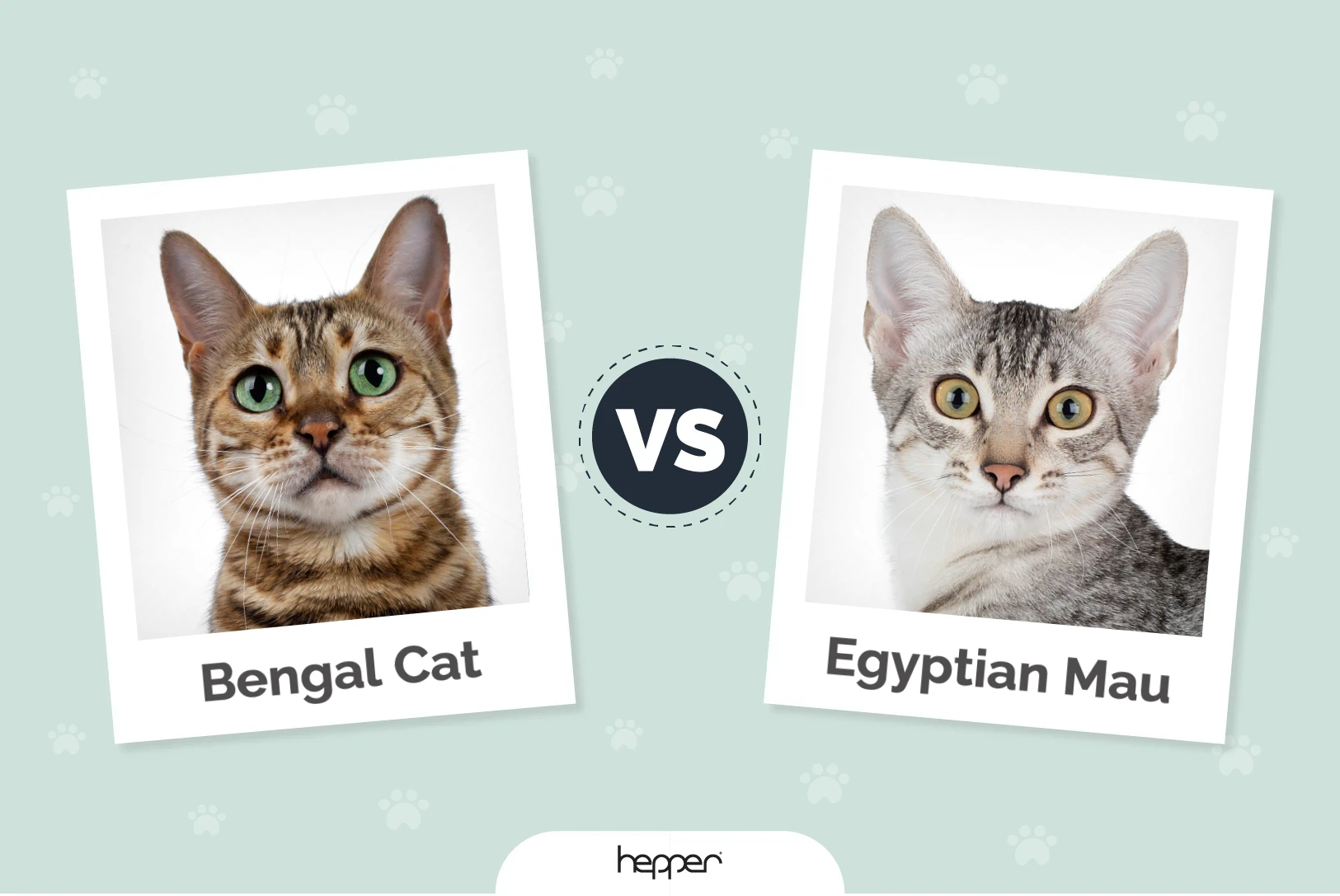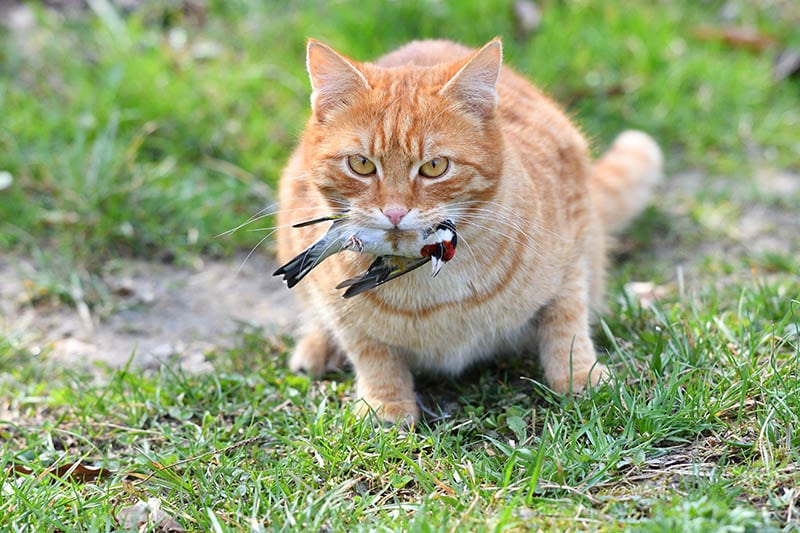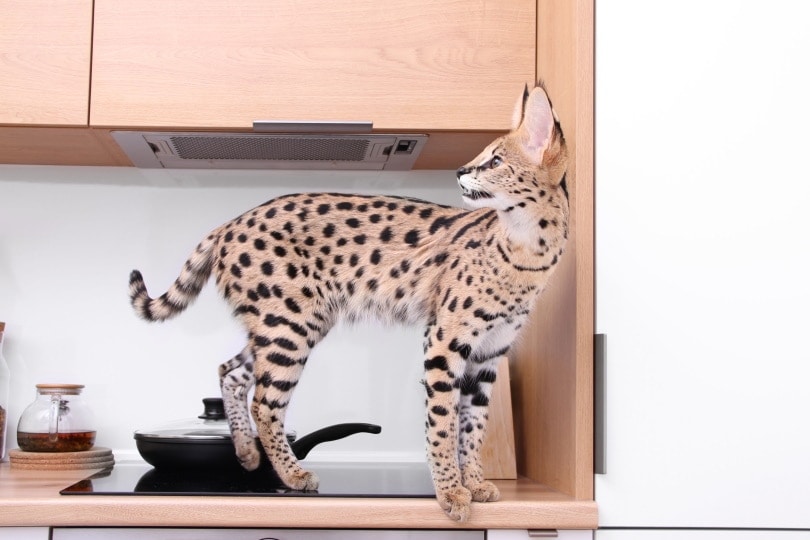How Do Cats Communicate With Each Other? Body Language, Pheromones & Sound
Updated on
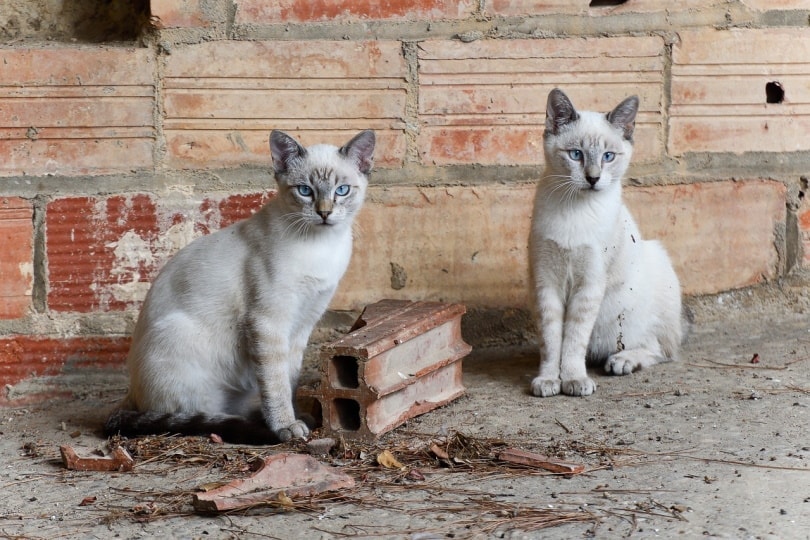
Cats can’t talk with human words, but that doesn’t mean that they don’t communicate with other cats. Cats have many ways to communicate with their fellow felines, even if it isn’t always apparent. They communicate with each other through a combination of vocalizations, body language, scent marking, and tactile interactions.
A cat’s body language can be extremely vital to understand as a cat owner. It is one of the primary ways that we can determine a cat’s feelings and thoughts.
However, there are other ways that cats communicate that we can’t understand at all. Cats often communicate through each other with pheromones. As humans, we can’t even smell these.
While our cat’s language isn’t entirely available for us, it is available to other cats. In many cases, cat communication hasn’t changed much since they were wild animals thousands of years ago.
Body Language
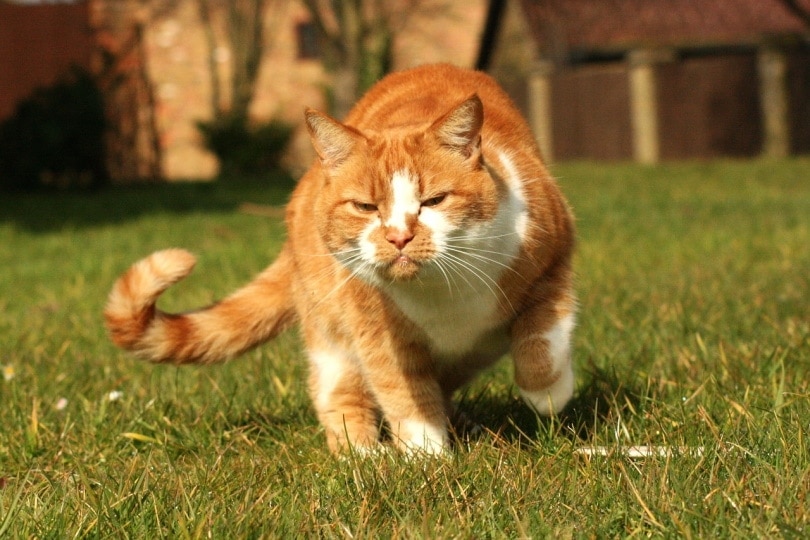
Most people know that cats communicate through physical cues. Which cues mean what can be a bit complicated, however.
Cats have an innate ability to understand other cats (this ability is likely practiced among littermates). Humans don’t, so cat owners misunderstand many physical cues.
A cat’s tail plays a significant role in its communication. Cats will twitch their tail in different ways and wave them back and forth. The direction, speed, and location of the tail movement can tell another cat many things. For people, it’s a bit more complicated. Often, cat tail movements can change in meaning just by speeding up slightly.
As foreign speakers of this language, cat owners being able to tell the difference between various tail movements can seem futile.
Eyes are also a big part of body language. For instance, the “slow blink” is a common indication of contentment. If a cat slowly blinks both eyes at you (or another cat), they are likely inviting you for closer contact.
If you blink back, your cat may even trot over and lie down in your lap!
Aggressive behavior is often easy for people to figure out. If a cat raises their back and turns their side toward you, they are not having a good time. Raised hair and flattened ears are also clear signs of aggression.
Cats can read these signals loud and clear. They’re pronounced, which is likely why cats use them in an attempt to avoid fights.
The ins and outs of cat body language are too complicated to get into here. There have been whole books written about the subject, which you may want to read if you want to understand cats better.
Vocalizations

The most common cat sound is the meow. For the most part, people seem to think that they can interpret meows. However, this isn’t always the case. There are many nuances when it comes to a cat meowing, and the specifics can differ from cat to cat.
Studies have shown that people are terrible at interpreting meows, and cats seem to understand this. They may adjust their meows to help the people around them understand their emotional state better.
Cats may meow at people frequently, but they don’t seem to practice this behavior quite as much with other cats. For the most part, cats seem to save their meows for people. It’s their way of communicating with us because we have difficulty interpreting their other communication methods.
For the most part, cats will not meow at each other. It isn’t that cats can’t understand another cat’s meow — it just isn’t the most straightforward way for them to exchange information with each other.
On top of meowing, purring is a standard communication tool. However, it is more multi-faceted than most people credit it for. Purring does not always equal happiness. Some cats may purr when they are in pain or sick.
Hissing and growling are typically easy for people and other cats to understand. Cats usually only hiss at other cats as a last resort. If their other methods of communication are ignored, a hiss might be in order.
Usually, a hissing cat is attempting to make the other cat back up. It’s a way to communicate without starting a fight. In the wild, fights can be potentially deadly. Therefore, cats will often make a great deal of noise and communicate their discomfort in many different ways before they start fighting.
Pheromones
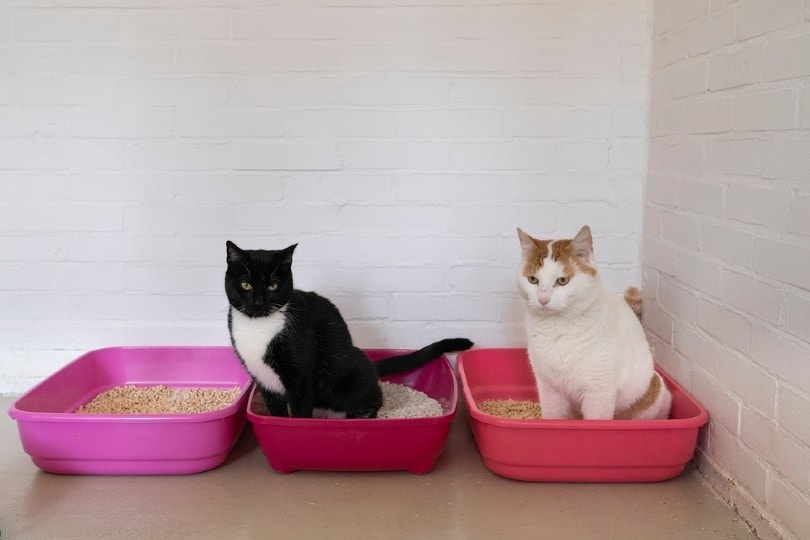
Cats can communicate through scent. Sometimes, we can smell these scents. It is difficult to miss the scent of cat urine, after all. But other times, we can’t. Most cat pheromones go entirely unnoticed by human noses. We never needed to smell them, so we never evolved the ability to.
But pheromones are obvious to other felines, and they can say a great deal about a cat.
Cats have scent glands spread throughout their body, including on their foreheads, cheeks, and chins. They secrete oils from these scent glands that have particular smells and then rub them against other things.
If you’ve ever wondered why cats rub their heads against everything, that’s why! They’re spreading their pheromones around for other cats (and potentially us, in a cat’s mind).
Cats will also exchange their scents by rubbing against each other. Community grooming performs the same function. Felines that are particularly close may do this so they smell the same, though it can also be used as a form of communication.
When cats mark an area with their scent glands, it usually doesn’t mean much to us. We can’t smell it or detect that the oils are there.
On the other hand, cats will also mark with urine, which we do notice. Luckily, cats don’t do this extremely often. It isn’t an innate part of their behavior. Marking with their cheeks is more than enough for most cats.
When a cat starts spraying urine, they are likely stressed. Just like people, cats may seek to control their environment more when they are stressed out. Sometimes, this includes marking everything in the house to keep other cats out.
Physical Contact
Cats can also communicate with each other through physical contact. If a cat bats at another one, their thoughts and feelings are quite obvious!
Cats can communicate in other, less obvious ways, though. When cats rub up against each other, they are often communicating using their scent glands. This behavior helps the cats mix their scents, which can be helpful if they need to find each other again.
Often, cats only rub against other cats that they know and like. It can be a vulnerable position, so cats won’t try it unless they trust the other one. This fact alone makes it a helpful communication tool for cats. They’re telling each other that they are trusted friends.
Final Thoughts
Cats communicate with other cats differently than they do with people.
For us, they do a great deal of meowing. This behavior likely evolved after they were domesticated. It seems to be the easiest way for them to communicate with us, though we are terrible at understanding it.
With each other, cats use more body language and pheromones for communication. They will use vocalization, especially hissing and growling, but this is far less common. For the most part, cats are good at getting their point across without ever opening their mouth.
There are many parts of cat-to-cat communication that we will never understand, simply because we aren’t cats. Many of us can’t even imagine what it would be like to communicate through smell!
Featured Image Credit: dendoktoor, Pixabay



